Canfranc station, the silent movie star of the Pyrenees
Plus, a strange spa resort at 1,600m as our road trip continues...
Canfranc railway station has been called the “Titanic of the mountains” and “Casablanca in the Pyrenees” during its short life as an international crossing between France and Spain. Maybe no exaggeration since it has suffered fire, derailment, smugglers, spies, Franco and the Nazis. My first impression was of an old silent-movie star, frozen in time, lipstick intact, full of secrets.
It confronts you after rounding the bend at the end of Canfranc village, the majestic 240m-long station hall set tight up against a backdrop of moody mountains.
The pouring rain, low grey clouds and green forest slopes all added to this slightly eerie atmosphere (I can see why it gets compared to Wes Anderson’s Grand Budapest Hotel). I was tempted to brighten up my photos for this post, but the cloudy gloom is part of its charm.
The station hall, which was left to decay in the 70s, has been renovated to its former beauty now and turned into a luxury Barcélo Group hotel. Behind the hall, however, you’ll find disused wooden train sheds and some old carriages from back in its heyday.
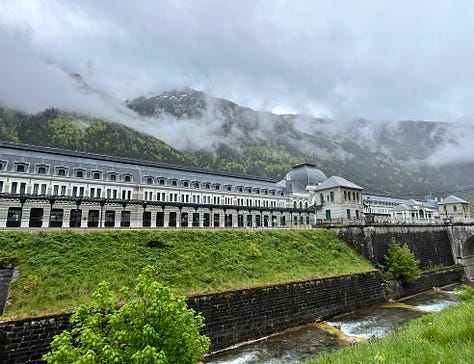
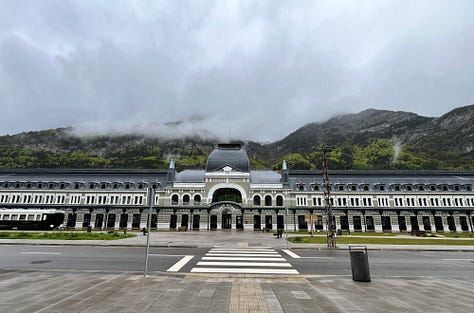
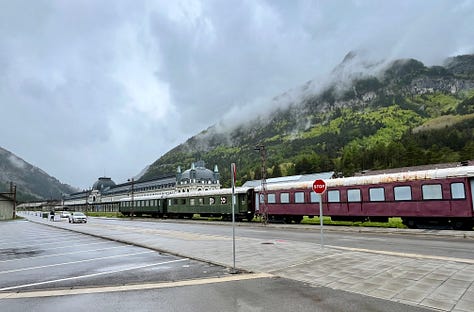
Not that its days were so “hey.” It opened to great ado in 1928, but was ravaged by a fire a few years later. Then it closed in 1936, when Franco shut the border with France at the start of the Spanish Civil War. It reopened in 1940 and was then taken over by the Nazis. This was its “Casablanca” era, when it became a hive of smuggling, spying and people fleeing into Spain. Its French customs chief at the time, Albert Le Lay, aided the French resistance and helped hundreds of Jews escape into Spain, earning him the name “Canfranc’s Schindler.”
The station stumbled through the 50s and 60s, until a derailment on the French side of the border in 1970 proved to be the literal end of the line for Canfranc.
Today, there is a Renfe station concourse behind the old hall. It was deserted when we were there. An A4 printout tacked to a board showed you had to take a bus for hours to get to the next train station. Seemed somehow fitting.
Balneario de Panticosa
Soaked anyway after Canfranc, we doubled down and headed for the Panticosa baths. These thermal springs were first mentioned in 1693 and it was built out as a spa destination in the 19th century. This old postcard shows how large it used to be.
Getting there means navigating a long, narrow road of hairpin bends dotted with “falling rocks” road signs. The resort, perched at 1,600 metres, is a weird hodgepodge of buildings ringed by the most breathtaking natural scenery.
The resort’s different lives over the years are all on display. There is a decrepit former Italian restaurant with flaking yellow paint and its net curtains still hanging and a bunch of crumbling, roofless stone buildings.
There’s also a beautiful church from 1875 shouldered up against the spa building, and two hotels, one in an elegant villa and one ugly 70s-looking one.
We headed into the spa, armed with one paltry towel each as only hotel guests are allowed to have the bathrobes, and splashed from pool to sauna to hammam to next pool. It is huge, with open roofs to the sky in some baths and a hot-spring pool outside where you can gaze up at the 3,000m mountains.
Wrinkled and cleansed, we drove back down the mountain to our digs in the 50-person village of Lanuza squatting on the edge of its reservoir.

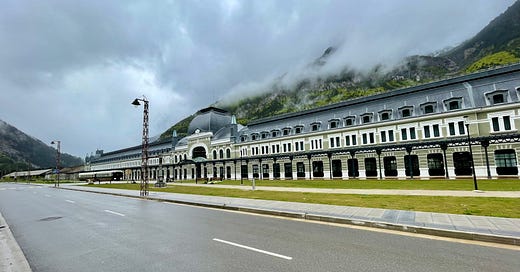




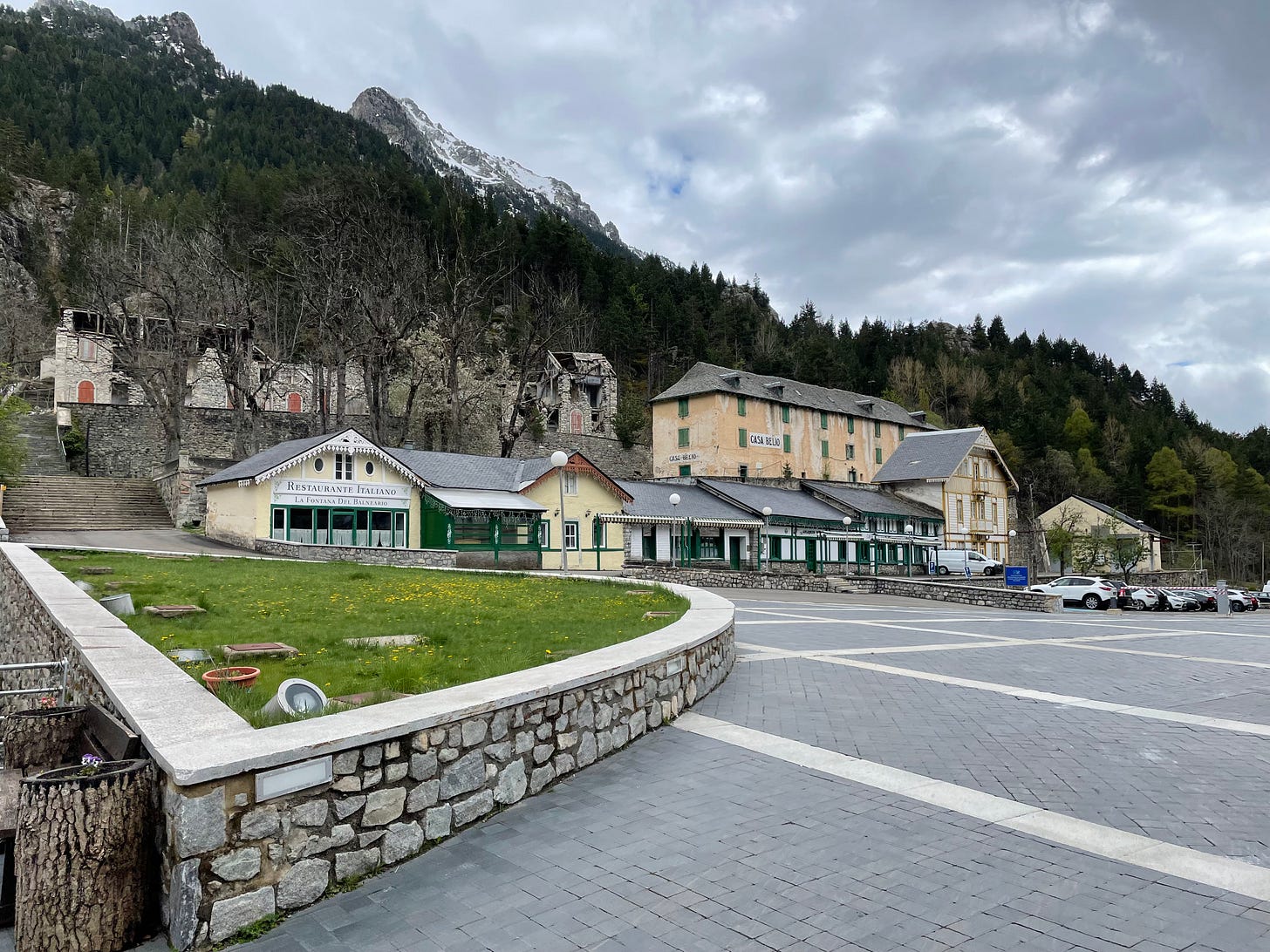
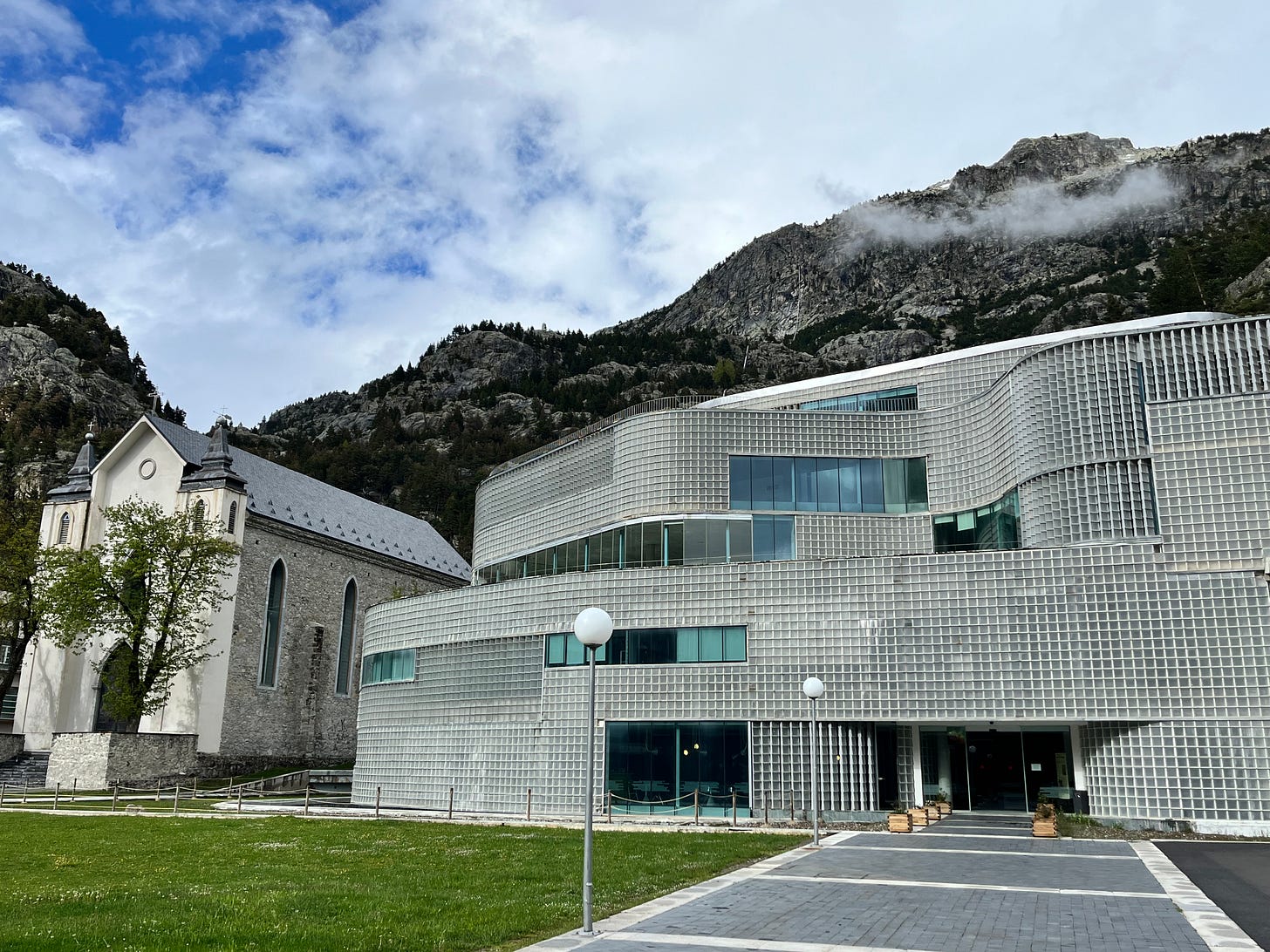
Definitely putting this on my list!
We stayed in Canfranc this time last year, a few weeks after it opened. It was almost empty and we got insanely lucky with the rates - we stayed in the penthouse for about €80/night. It was fabulous but so odd; as you say, it’s so hard to get to and there’s not much in the village. I was surprised I couldn’t find much information on its history there either - I ended up speaking to a French teacher on a school trip who filled me in!